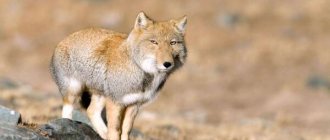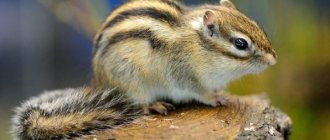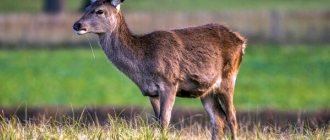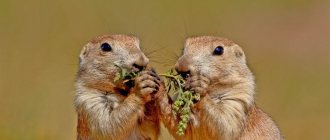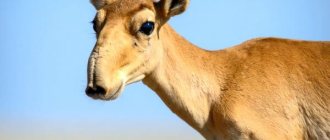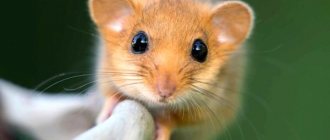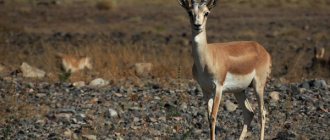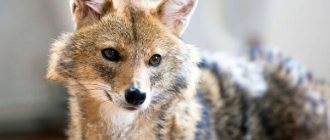- Fox fur coat
- Habitats
- Nutrition
- Fox housing
- Lifestyle
One of the most important factors on which the possibility of the existence of animals in a particular region depends is climate. In places of permanent residence over millions of years, animals have adapted to its changes. But heavenly conditions on earth for animals have never existed anywhere. Frosts, snowstorms, snowfalls, drought and other unfavorable conditions have always darkened the lives of four-legged animals.
It is especially difficult for animals in winter. Previously easily accessible food falls under a ball of snow, and is annoyed by frost and cold wind. However, harsh winters always happened on Earth, and animals resisted them as best they could and survived. Therefore, even before the onset of winter, when the first frosts fall on the ground, all wild animals rush to prepare for this harsh time: to stockpile food or provide themselves with housing. Not all animals continue their active lives with the arrival of cold weather. Most of them spend the winter holed up in their shelters and only come out to get food for themselves. And some animals, such as a bear, badger, and raccoon, are preparing for winter sleep. To do this, animals need to gain a sufficient amount of subcutaneous fat and find a place to winter. This way of living in winter can be said to be the luckiest, because for those who spend this time on their feet it is very difficult to find food, both because of the snow cover and due to the less activity of animals. In this regard, over the centuries, mammals have developed an instinct for storing food, which is predominantly unique in each species. Plus, snow frosts and forest hunters reduce the survival rate in the forest. Winter brings significant changes to the lives of animals:
- Changes in hairline;
- Seasonal migrations;
- Changing your diet;
- Lifestyle changes.
How does a fox winter?
What does a fox do in winter?
What does it eat? Where does he live? The fox, like all animals, has a very hard time in winter. How does she survive this harsh time of year?
Well, first, like other animals, she carefully prepares for it, growing a warmer coat. Her fur becomes longer, thickens and the fox becomes even more beautiful and fluffy in winter!
Usually, foxes like to live in the highlands, but with the onset of winter they descend into secluded valleys, spending the winter not in burrows, but in open dens in the snow, where the snow is not so deep, where food is more accessible and where human habitation is closer. After all, there are times when there is no food, but here you can steal both a chicken and a duck on the sly.
But most of all, the fox loves to hunt mice in winter, which is why it lives where there are a huge number of them. The red-tailed bird has an excellent sense of smell, therefore, having only sniffed the snow and instantly smelled a mouse, it quickly digs through it with its front paws and grabs its prey.
Interestingly, a fox can hear a mouse squeak at a distance of 250 meters!
But if the snow cover reaches a height of 40-50 cm, the fox has to switch to hunting hares - here it is exclusively fed by its feet. Try to keep up with the long-eared one!
It’s good if the winter days are windless, then even in severe frost the fox is not so cold, but if there is a snowstorm or gusty wind, it seeks shelter in the depths of the forest, near stumps, bushes, where it curls up in a ball, covering itself with its tail.
In January-February, foxes begin their mating season.
Foxes begin to prepare for winter in the middle of summer. Even then, they gradually begin to grow winter fur, which will completely become winter by November or December. A thick fur coat saves her from frost.
Foxes do not store supplies for the winter. And they experience difficulties with food in winter, since the mice hid in holes, but there are no chicks or frogs. In winter, foxes feed on small rodents, birds, and hares. The fox hunts in the field because it is easier for her to catch her prey there, because the snow there is blown away by the wind. Thanks to her good nose and good hearing, she finds mouse holes. But it is not always possible to catch voles or a hare, which is why he often goes hungry. Even in deep snow, a fox walks without difficulty, since it has little weight, and therefore does not fall into the snow.
Foxes do not overwinter in holes, as one might think, but in open dens in the snow. The fox curls up into a ball and covers its nose from the frost with its tail.
The mating season for foxes begins in January-February. And by the end of winter, the fox begins to select a place where it will raise its future offspring.
The fox usually lives in a hole in winter. However, she lives there not only in winter, but also at any other time of the year. Foxes usually build holes at some elevation, on a hill or at the edge of a forest. They make this choice in order to have full opportunity to survey the entire surrounding forest. Lisitsina’s fears are related to the fact that she is hunted by both wolves and wild boars. And the fox, before getting into the winter hole, confuses its tracks for a long time and carefully, running chaotically through the forest.
In winter, the fox continues to hunt for its prey. Based on research by zoologists, the largest population of foxes is located where there are a large number of representatives of the so-called voles. These rodents are the most accessible type of food for them, especially during the winter periods of the year, when it is most difficult to obtain food. Fox hunting for field mice is a very exciting process for researchers. The fox moves quietly through the forest snow, carefully listening to the squeak of its potential victim. Having felt the rodent and determined its location, it quickly sticks its nose into the snow, while helping itself with its paws to reach the found prey. The most important role in this event is given to a certain factor of surprise, because the mouse, despite its excellent hearing, cannot always foresee that a fox is about to appear, as a result of which it simply does not have time to hide from the sharp teeth of the predator. A fox in the forest in winter also runs around forest plantations in search of dead birds, the banks of various bodies of water, and besides, it does not disdain waste and carrion.
Lifestyle
Winter time also affects the activity of the animal. This is due to weather conditions, the availability and nature of food. In spring and summer, foxes often go out to hunt in the early morning or at dusk. In winter, when the nights are very long and dark, the fox can be active in the middle of the day. But most often the fox can be found hunting mainly in the morning. She wanders less often in the evening. From mid-winter, the animal, judging by observations, goes out hunting at dusk, from 18 to 22 hours, in search of prey and wanders around its hunting area. By the middle of the night, and at one o'clock only closer to the morning, she goes to rest. A fox spends 5-7 hours lying down.
There is insufficient data regarding the stability of the boundaries of areas occupied by foxes. In summer, such a hunting territory is small in size, and with the onset of winter, after the settlement of mature young foxes and the establishment of snow cover, the fox habitat area can expand repeatedly and may change depending on various factors. For example, disruption of the structure of snow cover, weather conditions, and the appearance of carrion lead to changes in the fox’s habitat.
This territory is an area well studied by the fox during its daily wanderings, and on average has an area of 10-20 km in diameter. During the entire time the fox wanders through the snow, as a result, one can observe an extended chain of tracks with the most bizarre patterns across fields, forest edges and along streams. Sometimes such a trail extends for 30-40 km. When there is no food, hunger pushes foxes to walk widely in search of food supply and the duration of the daily movement increases. In the taiga and tundra zones, foxes can use roads and various kinds of paths for movement, where the snow is well compacted, which makes it easier for the animal to move. However, this custom of the fox walking not through the forest, but along roads and paths cannot be explained only by the ease of movement in winter. It is clear that it is easier for a fox, whose pressure on the snow is quite significant (from 29 to 45 g per 1 cm square), to walk along the indicated road than on loose snow. There is no doubt that this can also be explained by food shortages in winter. Along the roads the fox prowls in search of scraps.
As we have already understood, the life of not only foxes, but also other wild animals in winter conditions is especially difficult. And it is our power and responsibility to help four-legged people in difficult times. For this purpose, forestry workers, hunting farms, and activists of hunting groups in places where animals constantly winter, set up small feeding areas in the forest for animals. In very frosty winters, brushwood, corn stalks, and straw are laid out near the feeders. Such assistance can play a decisive role in helping animals cope with harsh winter conditions.
Common fox: description, lifestyle
The common or red fox (Vulpes vulpes) is a widespread predatory mammal of the canine family.
The fox is familiar to everyone, at least from Russian folk tales, where she invariably takes the place of a cunning, quick-witted and far-sighted hero, where she is usually referred to respectfully as Lisa Patrikeevna. In fact, this animal, the size of a small dog, is really smart, but not as smart as our usual pets - dogs and cats. However, the fox is smart enough to successfully survive Russian frosts and find food even in the most treeless areas.
Where do foxes live?
Foxes, which have learned to adapt to a wide variety of climatic conditions, are extremely widespread. Their habitat is almost the entire territory of Europe and Asia, North America and North Africa. These animals also successfully acclimatized in Australia, where they were brought in the mid-19th century.
The fox lives in a wide variety of regions - from mountains and southern steppes to taiga expanses and tundra. These predators can be found in places where no one has gone before, and near rural outskirts. Being an ecologically flexible animal, the fox adapts surprisingly well to a wide variety of living conditions, but prefers open landscapes: forests, hills, ravines, fields, forest-steppes. She is not very fond of the remote taiga, snow-covered areas and desert.
Description of the fox
The common fox is the largest species of the fox genus. The body length of the animal is 60-90 cm, weight – 6-10 kg.
The color and size of foxes vary in different areas. There is a pattern: the further north, the larger and brighter the foxes are, the further south, the smaller the size of the animal, and the fur loses its brightness and becomes dull. The most popular color of foxes is a bright red back with a vague dark pattern, a white (rarely black) belly, and dark paws. In southern latitudes, the color of fox fur varies from light gray to sandy yellow.
The undoubted decoration of any fox is its tail: fluffy, with white underfur and a black tip. Sometimes its length is almost equal to the length of the animal’s body.
The fox's body is light, dry and agile: the animal is capable of bending, crawling along the ground while hiding prey, and stretching out while running fast. The legs are thin and sinewy, flexible at the joints. Like most animals that can run fast, the fox runs using its toes. This explains the calloused, hard soles and short, blunt claws. The great length and strength of the hind legs contributes not only to rapid movement on level ground, but also to making unexpected jumps and turns, in which the long tail acts like a steering wheel and helps maintain balance. The same tail, fluffy, like most of the body, serves as a blanket for the fox during sleep. Curled up in a ball and wrapping its tail in front, the fox uses it as a muff, immersing the coldest parts of the body - the legs and the muzzle covered with short hair - in the long soft hair. If you look closely at the head of the animal, it is not difficult to discern the main features of the predator. Relatively large and erect ears indicate excellent hearing, a strongly protruding muzzle with a thin nose indicates an equally perfect sense of smell, lively, yellow and slightly slanted eyes with a slit-shaped pupil (set vertically, like in cats, but slightly more rounded) - o vision adapted to darkness.
Fox lifestyle
Foxes, as a rule, are nocturnal, but there are also those that hunt for food in the morning and daytime hours and sleep at night.
Foxes can dig very long and multi-chambered burrows in the slopes of ravines or hills, but they are not used as permanent homes. Burrows serve for breeding and sometimes as shelter from danger. Here the female gives birth and brings 5-6 cubs. For safety, the fox hole has several exits - holes. The fox cubs live in the main chamber underground, but they can escape from the enemy (for example, from the fox terrier, a breed of dog specially bred for hunting foxes) through emergency exits. Sometimes the fox uses other people's holes - badgers or marmots, driving out clean owners with their sharp and strong smell.
Foxes do not hibernate. Throughout the cold season, they wander around their territory and rarely use their burrows.
The fox is a cautious animal, but at the same time it is not short of curiosity. An empty tin can, a colored piece of paper - whatever comes her way, she will definitely examine it. What motivates a fox when it comes out to the noise of a car or train - simple curiosity or curiosity related to personal safety? The beast seems to be checking who has appeared in the forest and who to expect trouble from.
Each animal has its own area where it lives and gets its food, and if the “borders” were violated by another fox, the integrity of the territory is restored through a fight.
Signs of rabies in a fox
Almost half of rabies infections from wild animals occur through contact with foxes. A sick animal can be identified by its appearance and behavior. Characteristic signs of a carrier of the disease are a protruding tongue, intense salivation, and disheveled fur. The animal may have difficulty focusing its vision, which may result in squinting or blurred vision.
Due to damage to the nervous system, the behavior of the animal also changes: in some cases, the disease becomes the cause of unmotivated aggressive attacks by foxes on animals and people, and sometimes the predator becomes lethargic and unnaturally affectionate, and when you try to stroke it or pick it up, a sudden bite may follow.
Rabies is one of the most dangerous diseases transmitted from animals to humans. If a course of rabies vaccinations is not administered immediately after a bite, death is likely. If you encounter an animal in the forest that behaves unnaturally (it is not afraid of humans, does not run away or hide), you should leave this territory as soon as possible, without making sudden movements and without turning your back to the fox.
What does a fox eat? What does a fox eat in the forest in winter?
The fox is a very beautiful predator with a long fluffy tail. Her muzzle is long and narrow, and her eyes are very cunning. This predator is similar in size to a dog. The color of the fox varies from fiery red to gray. In the steppe it is gray-yellow, and in the north it is almost red. The silver fox is an ordinary fox with slight deviations from the usual color. The fur of these animals is considered the most beautiful, which is why they have been bred on farms for a long time.
Where does this predatory beast live? The fox lives in Asia, America, Europe and even Africa. It adapts perfectly to various conditions. The fox is a cunning animal. She can resort to various tricks to get food for herself.
The image and characteristics of the life of a fox in the wild
The active period for foxes occurs at night. During the day, predators prefer to sleep in burrows. These animals live alone and rarely gather in groups of 2–3 individuals. They mark their territory with excrement.
Red foxes live 3–10 years; in the zoo, life expectancy increases to 25 years.
Winter diet of foxes
What does a fox eat in winter and how does it catch its prey? According to research by experts, the largest population of foxes lives where there are a large number of voles. Such rodents are the most accessible type of food for them, especially in the winter season, when it is most difficult to obtain food.
Fox hunting field mice is a very interesting process. The fox moves quietly through the snow, listening to the squeak of its potential victim. Having sensed a rodent and figured out its location, it quickly dives into the snow with its nose, helping itself with its paws to reach its prey.
The main role in this matter is given to the factor of surprise, because the mouse, despite its excellent hearing, cannot always foresee that the fox will appear, as a result of which it does not have time to hide from the teeth of the predator.
Plant food
What does a fox eat, besides everything described above? Plant foods are also present in the diet of these animals. As a rule, it is consumed by those red-haired predators who live in the southern regions. They prefer berries (especially blueberries, lingonberries) and fruits, as well as some vegetative parts of edible plants.
Note that such food serves, rather, as an addition to the main diet; it will never become the main dish in the diet, because the fox by nature is a predator, and therefore a meat eater.
What does a fox eat in the spring and summer?
At this time of year, foxes especially need good food and plenty of prey. After all, the cubs are now in their care. By the end of March, the babies are born after an eight-month pregnancy. Typically, five to six small fox cubs are born. For the first 1.5 months, the cubs feed on mother's milk. At the age of two weeks, the babies can already see, then a period of rapid development begins; by the end of April or the beginning of May they crawl out of the hole, play with each other, and when tired, lay down on the grass and lie quietly, basking in the sun. At the same time, parents accustom little foxes to regular food; they bring live prey so that the cubs feel the excitement of hunting for such food.
The fox very often comes up with very original ways of obtaining food. For example, it was noticed that predators at a safe distance follow the plow of a tractor that plows a field at night. It turned out that the foxes caught voles in this way, whose holes opened during plowing. When this predator accidentally died (the animal fell under a plow), people saw as many as sixteen rodents in its stomach. This observation allowed scientists to conclude that rodents are the basis of the fox’s diet.
Reproduction and lifespan of a fox
Spring time is the period when little foxes are born. Before giving birth, mother foxes dig a large hole, and can outwit some badger and occupy its territory.
Gestation time is approximately 44-58 days. Usually 4 to 6 babies are born. A caring mother feeds her children milk for 45 days, then gradually introduces them to solid food. After they are two years old, they become fully grown and independent, capable of reproducing and getting their own food.
In nature, foxes live for about seven years; at home, their life expectancy can reach 20-25 years. Foxes as pets - this is all quite real and possible. Just first you need to better know how to properly care for them and take some precautions.
The very first thing is that not every country allows you to keep a fox at home, so you need to find out from competent people how things are in your country. The second and also important factor is the presence of a familiar veterinarian who will be able to examine the animal at any time, provide it with veterinary care, and give it the necessary vaccinations.
The pet must have its own space. The fox must be provided with a den in which it can hide at any time, sand for the potty, which it can very quickly be taught to walk on.
The more time a person spends with a fox, the closer the connection between them becomes. Domestic foxes are not much different from dogs and cats. You can also play with them and take them for walks on a leash. buy foxes at a pet store or find an advertisement for the sale of exotic animals.
